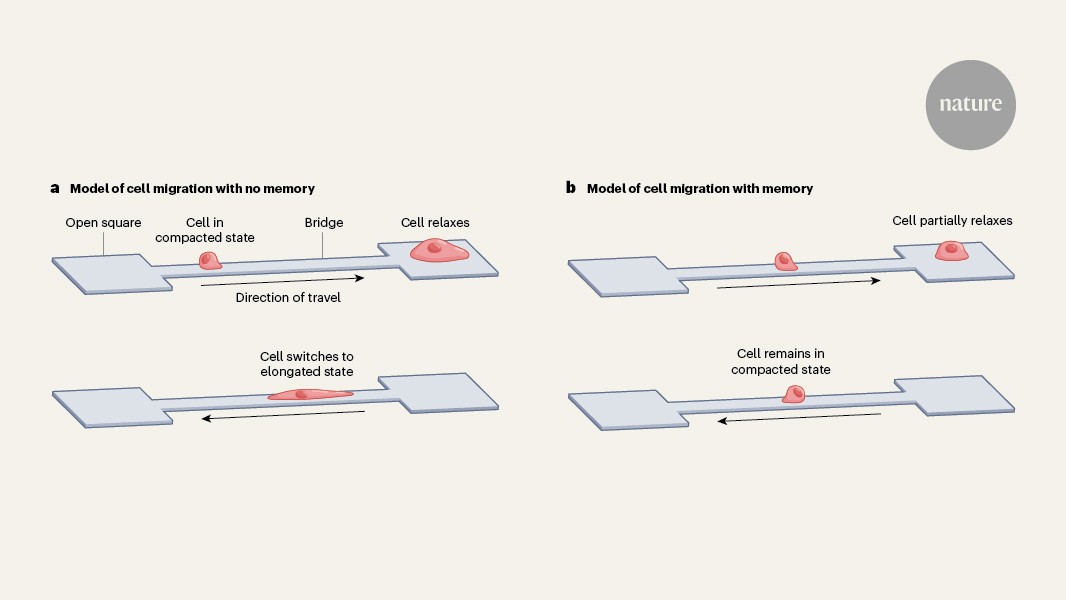
"The body is not an easy environment for cells to navigate. From immune cells patrolling for microbes to embryonic cells migrating to the sites where organs will form, and even cancer cells invading tissue, performing their functions means traversing a complex space of tangled meshworks, narrow tunnels and large obstacles."
"It is established that cells change shape to adapt to various environments but, writing in Nature Physics, Kalukula et al. report that cells can also retain a memory of past deformation. The researchers demonstrate, using experimental and theoretical models, that this memory is encoded in the cytoskeleton of each cell (the protein scaffold that gives it its shape), and that it supports efficient cell migration in non-uniform environments."
Cells navigate complex tissue environments made of tangled meshworks, narrow tunnels and large obstacles. Cells change shape to adapt to different spatial constraints and preserve function while migrating. Cells retain a memory of past deformation that is recorded within the cytoskeleton, the protein scaffold governing cell shape. Experimental and theoretical models demonstrate that cytoskeletal memory biases subsequent shape changes and movement patterns. Cytoskeletal encoding of deformation promotes more efficient migration in heterogeneous and non-uniform environments. This memory-enabled adaptation aids immune surveillance, embryonic cell positioning and invasive behavior of cancer cells by improving traversal of constrained tissue spaces.
Read at Nature
Unable to calculate read time
Collection
[
|
...
]